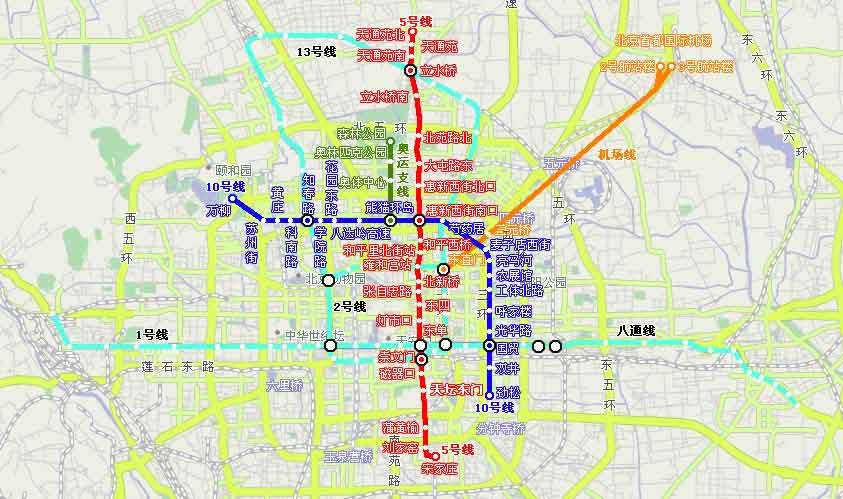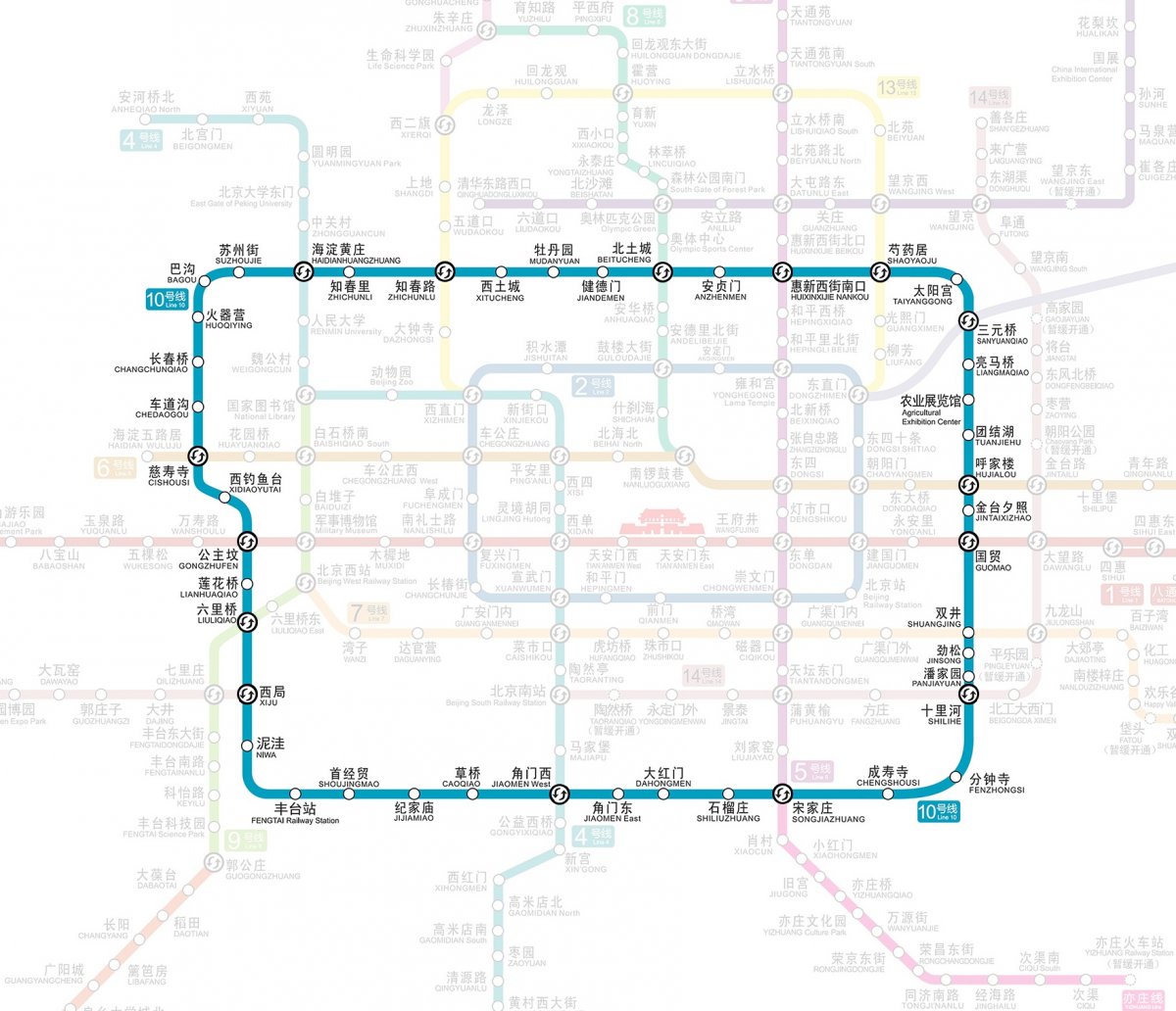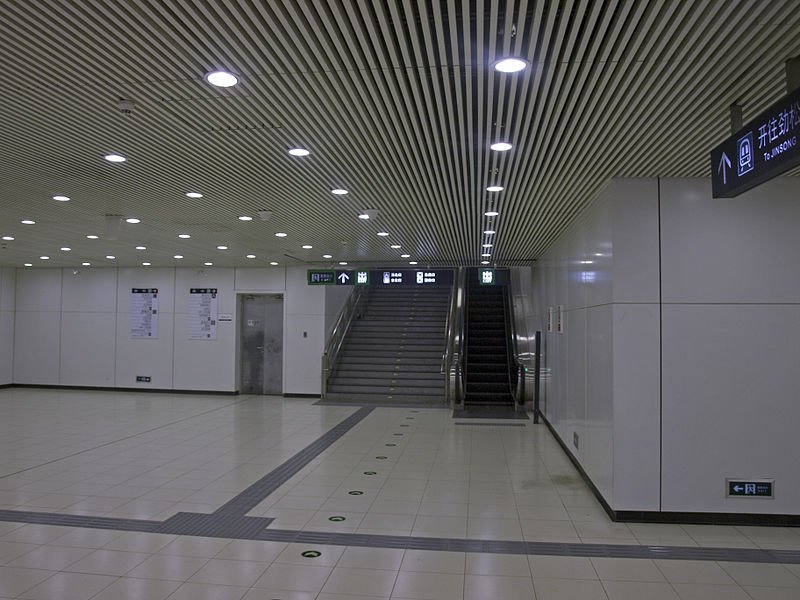Throwback Thursday: A Look Back at When Line 10 Wasn’t Even a Thing, Let Alone the Longest Ring
Throwback Thursday takes a look back into Beijing's past, using our nine-year-strong blog archives as the source for a glance at the weird and wonderful of yesteryear.
This month nine years ago there wasn’t even a Line 10. Just let that nugget of information sit in your post-Line 10 brain for a second. Yes, what has since become Beijing’s longest and most widely used subway line didn’t exist until July 2008, opening just prior to the Olympics.
Even then the first phase of construction capped the line at Jinsong in the southeast, running north and to the west to a now mysterious station named Wanliu, a portion of the city that we can only assume has quite literally been wiped off the map, replaced instead with Bagou.

It wasn’t for another four years that the second phase of Line 10’s construction was to be completed, consuming plans for what was in fact going to be a separate track – Line 11 – and leaving it a curtailed C-shape. The loop was finally enclosed in May 2013 with the opening of the southwesterly stations of Niwa, Jiaomen East, and Fengtai Railway Station, completing the Third Ring Road-skirting route that we see today.

If that wasn’t exciting enough, there was some serious hubbub regarding what Line 10’s Guanghua Lu-adjacent station should be called, the town planning equivalent of when Chris Martin and Gwyneth Paltrow deemed their daughter an Apple. This was the climate in the Beijinger office in March of 2008 when it was just announced that the station would forego Guanghua Lu and opt instead for altogether more, well, sentimental:
Let’s say you’re opening a subway station smack dab in the middle of the CBD, within the shadow of the iconic CCTV Tower and the soon-to-be-tallest building in Beijing. Next door is the well-known Kerry Centre and the nearest intersection is Guanghua Road and the Third Ring Road.
What would you name it?
How about Jintaixizhao, rehashing a reference to a centuries-old scenic vista long lost to the sands of time that few modern day residents have any clue about?
This is precisely what the Beijing subway planners have decided to do. Rather than the expected (and previously announced) station name of Guanghua Lu, the powers-that-be have decided the station will be named after the site where an inscription from Emperor Qianlong was found, indicating the location of one of the ancient "Eight Great Sites" of Yuan and Liao dynasty-era Beijing.
Yep, the day that Jintaixizhao a.k.a. “The Golden Terrace in the Glow of the Setting Sun” was immortalized in subway moniker form and joined the ranks of other such high-regarded historical Beijing sites as “The Great Wall Surrounded by Lush Greenery,” “The Moon over the Lugou (Marco Polo) Bridge,” “The Rainbow Floating over the Jade Spring,” and “Jade Islet in Shady Springtime,” was certainly talk of the town nine years ago. And apparently no expense was spared in recreating that solemn beauty when drawing up interior plans for the station:

Despite its pragmatic aesthetic, at 57km in length Line 10 now sits majestically as the world's longest subway loop line, taking 104 minutes to complete one circuit. Its 45 stations, of which one third are transfer stations, carry nearly 1,700,000 commuters a day on average.
Sadly, for those of us who weren't here for the subway's unveiling, Line 10 may be more notorious as the site where one unfortunate lady got trapped in the doors at the Huixinxijie Nankou station and was dragged to her death in 2014. The event serves as a cruel reminder that despite the engineering magnificence of Line 10, much like ouroboros serpent before it, the loop also symbolizes "the infinite cycle of nature's endless creation and destruction, life and death and despair" – a sentiment that is certainly felt when riding the subway during rush hour.
More stories by this author here.
Email: tomarnstein@thebeijinger.com
WeChat: tenglish_
Instagram: @tenglish__
Images: Wikimedia, photocdn.sohu.com, ebeijing.gov.cn







